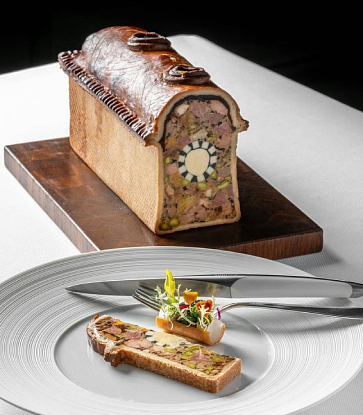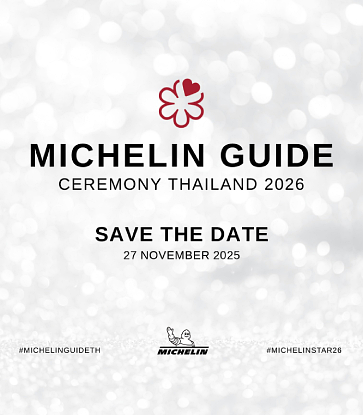Trat is the go-to destination for food, nature and art lovers. Though not as well-known as the famous Ko Chang, Trat is a peaceful place where one can enjoy both the mountains, forests and the sea together. Trat is thus a province with an abundance of food sources from the sea, the river and agricultural produce. In the past, Trat served as one of the essential trade routes where Thai, Mon, Chinese and Muslim merchants exchanged their goods. As time passed, the acculturation of these ethnicities has now become reflected in the province’s wide variety of local dishes making it one of the top destinations not to be missed for food connoisseurs.

When visiting Trat, don’t forget to try the province’s most famous fruit, Rakum, or salacca, whose delightfully sweet and sour flavour is complemented by a refreshing fragrance. During May of every year, this fruit is celebrated by the Sweet Salacca Festival, where fruit lovers from around the world can visit the event to taste the flavour of this exotic fruit. Salacca can be eaten fresh, as well as enjoyed in cooked dishes; such as, Tom Som Rakum, or savoury and sour salacca soup. Instead of using tamarind paste common to other Tom Som menus, here, salacca is used to give the dish a unique fragrance. Often cooked with chicken or fish, the recipe also incorporates good quality shrimp paste, or kapi, from Ko Chang to give a distinct flavour and aroma. For those who wish to buy fresh rakum, head to the Trat Municipal Market or Amphoe Khao Saming and Amphoe Bo Rai, which are homes to the two largest Rakum orchards. There are many salacca variations, though those who prefer sweet over sour will not be disappointed with Sala Sumalee. The most well-known Sala Sumalee orchard is Suan Som Pot, which welcomes Sala lovers and tourists all-year long without charging any admission fee. Visitors, however, are advised to contact the orchard before arrival.

The next must-try Trat menu is Khanom Chang Boran, also known as Khanom Daeng (sweet sticky rice dumpling). Khanom Chang Boran is made of glutinous rice cooked in Nam Dang, or alkaline water filtered from mangrove tree ash water (in Thai, dang means alkaline). When soaked in naturally derived alkaline water, the sticky rice turns into a beautiful off-white shade.
This rice is then wrapped in bamboo leaf and tied with a small thread of banana string before boiling until cooked. Khanom Chang Boran is served with cane sugar or syrup topped with ice as a refreshing snack on hot days. The reason behind using mangrove tree ash lies in the fact that Trat has an abundance of mineral-rich mangrove forests.

Amongst the mangrove forests, Ban Than Ranae Mangrove Forest offers a diverse topography of trees from the natural mangrove forest, Chak, and Tabun forests. The highlight of the trek is Lan Tabun, where one will be amazed by the tree roots which create an intricate network to cover acres and acres of the ground. Another activity is the Hoi Pok Preservation Programme, where visitors can preserve Hoi Pok, a local shellfish, by burying them into the soil - their natural habitat. When visiting mangrove tree forests, eat mangrove tree leaf tempura. This dish, locally called Bai Kong Kang Chup Paeng Thot, is a crispy batter made of deep-fried, bite-sized mangrove tree with tempura batter. The dish can be enjoyed alone or with a sweet chilli dip. Not only are they delicious, but it is believed that mangrove tree leaves can help cure stomach ulcers. Enjoy the dish like a Trat local and pair the tempura with a local herbal tea called Cha Roi Ru.
Aside from the wonderful local flavours, Trat also boasts a range of attractions and cultural destinations. At the heart of the city lies Trat Museum, a beautiful colonial building built in the reign of King Rama VI. For the Museum, the Trat Municipality commissioned the Fine Arts Department to design a space where visitors could learn about the province’s natural heritage and culture, as well as provide information on Trat’s geology, weather and natural resources. For those looking to delve deeper into Thai history, the Battle of Ko Chang Naval Memorial also offers a chronological history display of the battle with a battleship simulation.

For those who are interested in learning the locals’ way of life, another village worth visiting is Ban Nam Chiao community, where Buddhists and Muslims live in harmony with each other. Here, the villagers still follow the ancient fisherman’s way of life. The villagers of Ban Nam Chiao are of Thai-Chinese descent from the Chinese merchants who traded and settled here in the past. Initially, the locals of the village were Buddhist, but during the reign of King Rama III, Cham Indian, or Champa fled the war from Cambodia to Thailand (then the Kingdom of Siam) before settling down at Ban Nam Chiao, resulting in the rich cultural integration between Buddhists and Muslims at present.

The name of the village, ‘Nam Chiao’ is derived from its geography and tidal currents. Ban Nam Chiao can be directly translated to ‘strong tide village’. With major areas of the village surrounded by the sea and mangrove forests, the canal, which runs through the village centre and out to the Gulf of Thailand, becomes extremely strong during the flood season, hence the name Ban Nam Chiao. Aside from its cultural offerings, another highlight of the village is Tang Mae Krob, a crispy caramel snack also known to the locals as Khanom Nam Tan Chak. Crunchy, creamy and sweet, visitors can see the process of making this light brown caramel snack and get a chance to taste them at Ban Nam Chiao.

The most exciting activity in this trip is Saphan Wat Chai, a challenging 22-metre walk along a narrow bridge hanging 6 metres above the water’s surface. As daunting it may be, those crossing the bridge will be able to take in a spectacular eye-shaped shadow of the bridge against the surface of the water below. If adventure is not something that you seek, the artistic soul will be delighted by the Rak Khlong Bang Phra community, a small village located next to Khlong Bang Phra. This creative venue features century-old wooden houses and chic hostels with beautiful street art for visitors to take photos. The snacks offered here, too, will undoubtedly please many. Try Khao Kriap On Nam Chim Kung or soft rice crepe sans filled with spicy dried shrimp sauce. The soft, chewy crepe dough is served with a sour, sweet and spicy dip made of chilli garlic, sugar, lemon juice and dried shrimp. For those looking for something more mouthful, opt for Khao Kriap Pak Mo, which comes with a filling.

A trip to Trat may not be as popular as Ko Chang, but it will be a memorable trip that brings back fond memories of delicious local menus, beautiful villages, and charms that come with a simple way of life. Trat is truly a destination for those looking to discover a holiday of culinary, cultural, and sustainable tourism.
Must-visit
1. Ban Tha Ranae Mangrove Forest
2. Ban Nam Chiao community
3. Rak Khlong Bang Phra community
4. Sai Dam Beach, the Eastern check-in spot at the Laem Ngop Lighthouse
5. Suan Som Pot Salacca Farm























